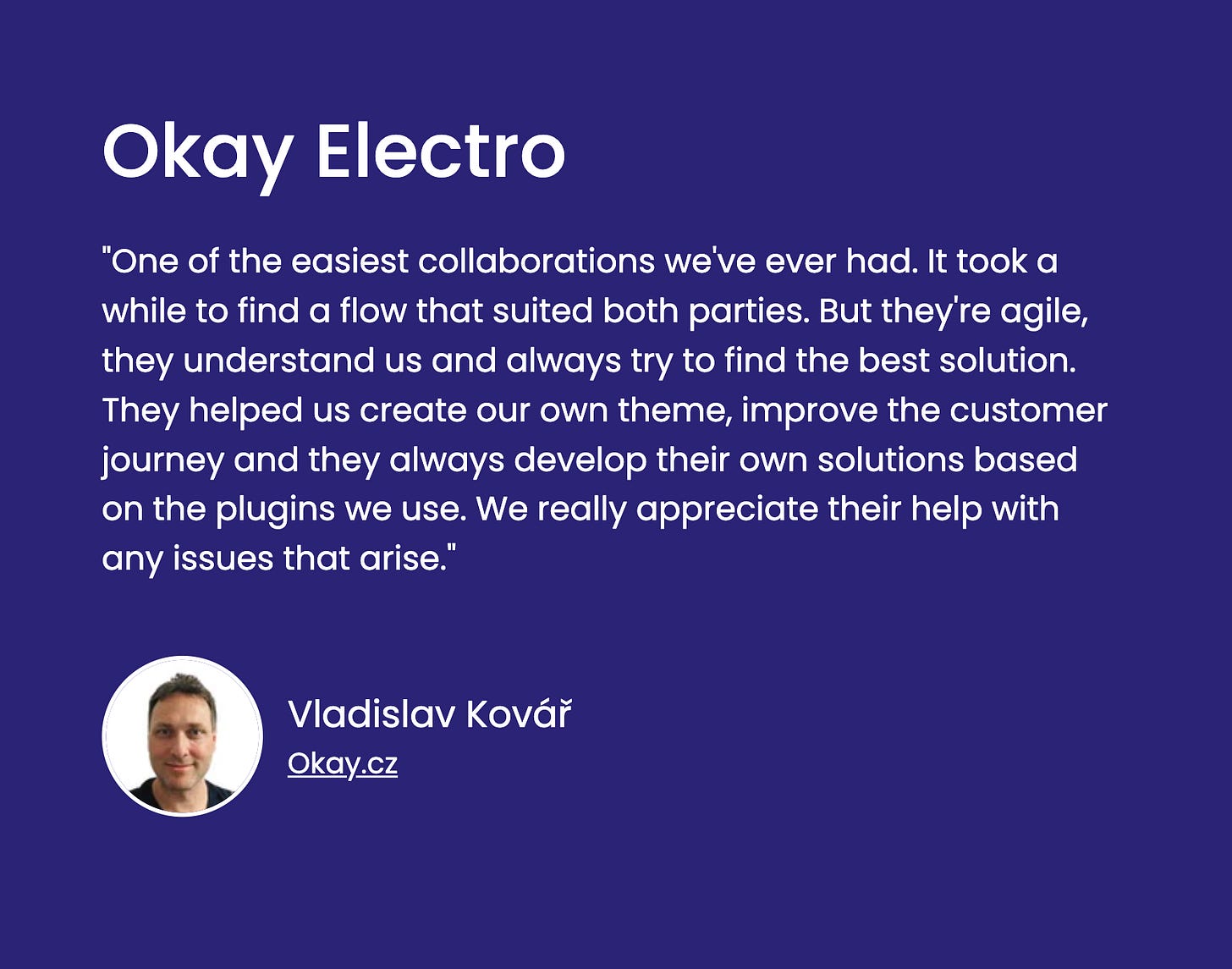No one is "Too Big to Fail." Not Even You!
This former Czech and Slovak retail giant - Okay.cz, once generating over $230 million in annual GMV, serves as a stark reminder: even dominant players need agility and vision to survive.
A lot has been written in the media about the collapse of this major omnichannel player. I've spoken with many people and heard various opinions. A negative view often prevails, criticising the company's leadership and their inability to react to changes. It seems as though they were solely responsible for their downfall because they simply didn't manage the business correctly.
Perhaps there's some truth to that. But if we settle for just this explanation, we, as an e-commerce community, will miss an opportunity to truly learn from their story.
Did you notice that a company with an annual GMV of over $230 million is gone? Do you not see the enormous success they achieved for two decades before COVID? If it could happen to such a strong player, what does that mean for the rest of us – smaller, yet successful, e-commerce projects?
That's why I'm writing about this today. For us to pause and reflect. What did they do well? What did they neglect? And what can we take away from it? I'm not the only or best person to evaluate the entire story – former employees, especially those in leadership, certainly have deeper insights.
However, I collaborated closely with this company, primarily during their transition from a custom solution to Shopify Plus. This gave me the opportunity to get to know their culture, people, and motivation for change. And that provides me with at least a framework for reflection.
What Did They Do Well?
1. Emphasis on the Lowest Price
I don't fully identify with this, but it was amazing for me to see how clearly this vision was communicated across the entire company. The purchasing department played a significant role in this, negotiating the best commercial terms with suppliers in the market. The company was well-known for its negotiation practices. This was something they intensively taught their employees, and wherever they could, they always got the best possible deal. All of this was so they could offer their customers the cheapest prices on the market.
2. True Omnichannel Strategy
Their online and offline operations genuinely collaborated. In-store sales associates were motivated to resolve orders that customers started online or contact people who left items in their cart. Few companies had such an advanced system in this regard.
3. Courage to Innovate
Sometimes it meant taking risks. When they acquired a furniture retailer, they tried to combine electronics and furniture under one roof. In essence, they were internally building two companies... complex, but ambitious.
4. Emphasis on Performance
They didn't play a game of image. They didn't focus on PR or office design. They focused on performance. People had to achieve challenging goals with minimal costs. This tough school produced exceptionally capable individuals. Anyone who employs former employees from this company today will confirm it.
As you can see, there's a lot to admire about this company. And that should serve as a cautionary tale for all e-commerce or retail businesses.
Where Did It Go Wrong?
Good question. And the interesting answer is that there isn't one factor that killed this company's success. On the contrary, several things had to converge for it to end up the way it did. This certainly won't be a complete list of all the problems. Every time I talk to someone who worked there, I hear something new I could add to this text...
1. Large Investments at the Wrong Time
Before and during COVID, they invested enormous resources in logistics and warehouses – with the goal of preparing for further growth. A bold plan, but insufficiently aligned with other priorities. The investment quickly became a burden.
2. Unmonitored Ego at Key Moments
It's no secret that ego always plays a big role in life and, of course, in business. It can often even open doors to productivity and success. But in this case, it also showed its worst possible shadow. There were problems in the company that went unaddressed for a long time. For example, unprofitable branches. The market changes rapidly, and relying on past glory in retail is a risk. Agility was lacking.
3. Unused Opportunities
When we started collaborating (2020), many doors were open to them: expansion, brand, retention, new technologies... However, many projects foundered due to internal disagreements, politics, or unclear management.
4. Poor Company-Wide Communication
Ambition isn't enough. It must be shared across the company. If the customer service line doesn't "live" the brand's vision, and the stores aren't working with current merchandise, the entire effort falls apart. Fragmentation between departments undermined the entire system.
What Can We Learn from This?
This company wasn't stupid. And they certainly weren't without talent. They had vision, courage, and ability. It just wasn't enough for it to work "somewhere." It had to work everywhere and together.
I am sincerely sorry for how it ended. This company was a major player with whom we managed to build a unique solution on Shopify Plus. And even though it feels bitter today, the feedback from former employees is reassuring:
If they hadn't used Shopify, their collapse would have happened even sooner. The e-commerce channel proved to be a truly profitable and productive part of the entire business.
If the innovations and results we achieved in e-commerce had been replicated across the entire company, it's likely the company would still be operating today.
These are just comforting facts that don't change the cruel reality. But they are encouraging for someone who put a lot into that project to convince the market that Shopify isn't just for small players.
No one is "too big to fail." Not even you…




